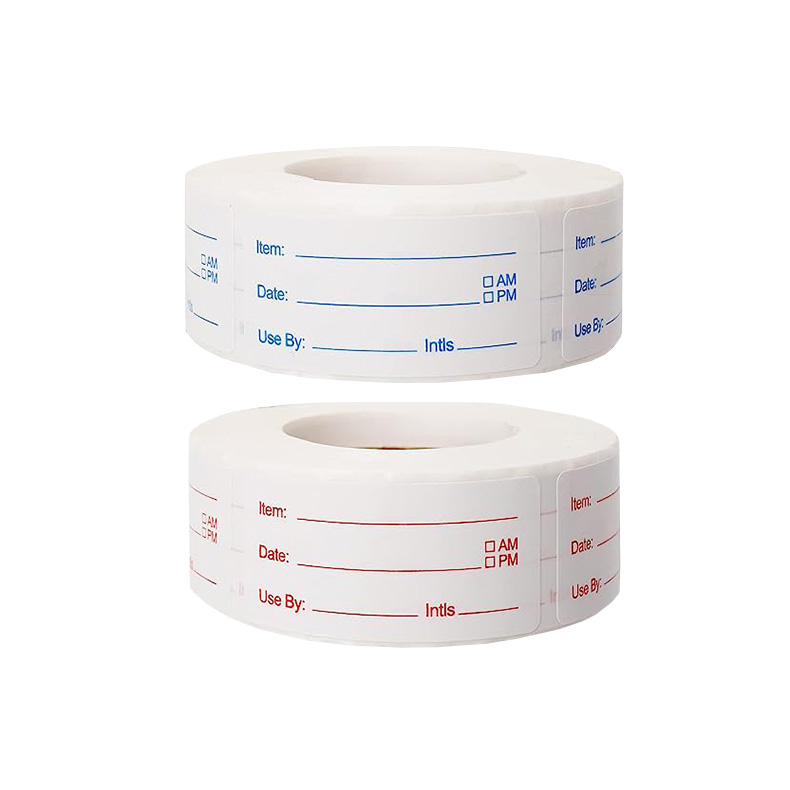In the food packaging sector, innovation often centers around finding solutions that enhance safety, convenience, and environmental sustainability. One such innovation making waves is the White Dissolvable Food Label. These labels are designed to dissolve completely in water, leaving no residue and ensuring compliance with food safety and hygiene standards. As the demand for eco-friendly and efficient packaging solutions grows, white dissolvable food labels are emerging as a game-changer for the industry.

A Breakthrough in Food Packaging
White Dissolvable Food Labels are specialized labels crafted from water-soluble materials. They are designed to mark key information on food packaging, such as production dates, shelf life, and ingredient lists. Unlike traditional labels that often leave behind adhesive residues or require manual removal, these labels dissolve seamlessly in water, making them an ideal choice for food packaging.
One of the most significant advantages of White Dissolvable Food Labels is their ability to maintain integrity in freezer and humid environments. This means they can withstand the challenges of refrigerated or frozen storage while still dissolving easily when needed. This dual functionality ensures that food products remain clearly labeled throughout their lifecycle, without compromising on safety or hygiene.
Environmental and Hygienic Benefits
The environmental impact of packaging materials is a growing concern in the food industry. Traditional labels, especially those made from plastic, contribute to waste accumulation and pose challenges for recycling. In contrast, white dissolvable food labels are biodegradable and do not contribute to plastic pollution. Their water-soluble nature means they can be easily removed during the cleaning or recycling process, reducing waste and promoting sustainability.
From a hygiene perspective, these labels offer unparalleled benefits. They dissolve completely without leaving any residue or glue, eliminating the risk of contamination. This is particularly important in the food industry, where cleanliness and safety are paramount. The labels' ability to dissolve quickly also simplifies the cleaning process, saving time and effort for food handlers.
Customization and Versatility
White dissolvable food labels are not just functional; they are also highly customizable. Available in various sizes and shapes, these labels can be tailored to fit different packaging containers and application scenarios. This versatility makes them suitable for a wide range of food products, from fresh produce to frozen goods.
The labels are also designed for ease of use. They have excellent printability and can be labeled using a variety of printers, including thermal transfer and inkjet printers. This ensures that essential product information is clearly visible, helping food operators accurately identify and manage their inventory.
Comparison with Traditional Labels
When compared to traditional food labels, white dissolvable labels offer several distinct advantages. Traditional labels, whether made from paper or plastic, often require manual removal and can leave behind adhesive residues. This not only complicates the cleaning process but also poses a risk of contamination. In contrast, white dissolvable labels dissolve completely in water, eliminating these issues.
Moreover, traditional labels contribute to environmental waste and are often non-biodegradable. White dissolvable labels, on the other hand, are eco-friendly and promote sustainable packaging practices. Their ability to dissolve quickly and leave no residue makes them a more hygienic and environmentally responsible choice.
Conclusion
White dissolvable food labels represent a significant advancement in food packaging technology. They combine functionality with environmental responsibility, offering a solution that is both hygienic and sustainable. As the food industry continues to prioritize safety, efficiency, and sustainability, the adoption of white dissolvable food labels is set to grow. These labels are not just a product; they are a testament to innovation and progress in an industry that touches every aspect of our daily lives.



